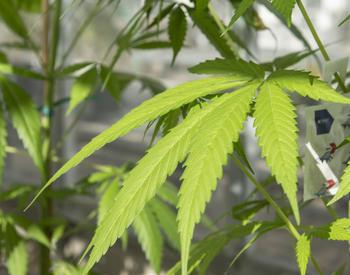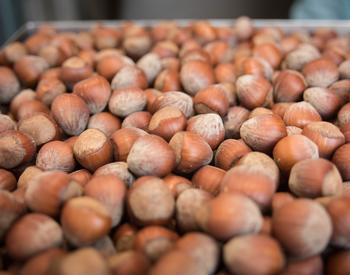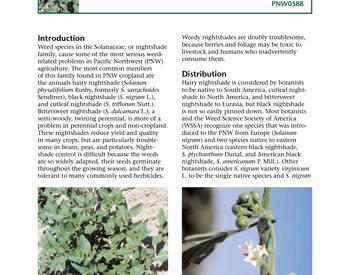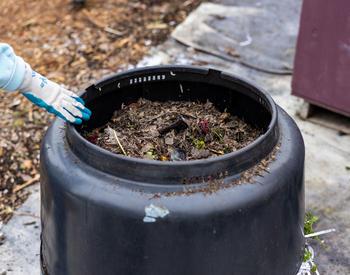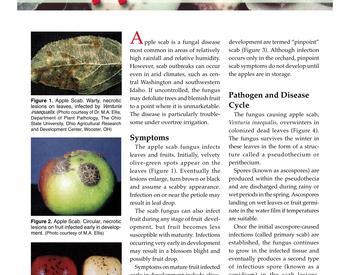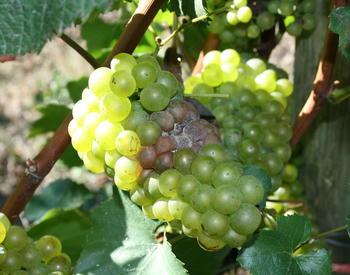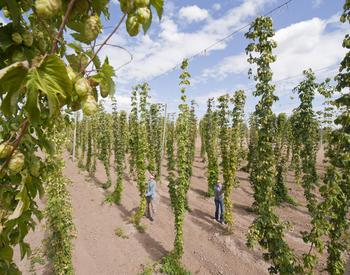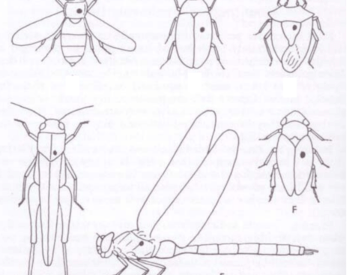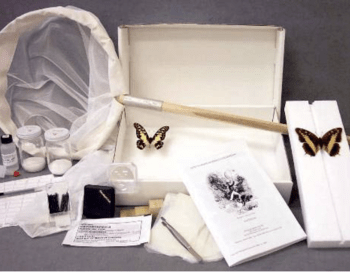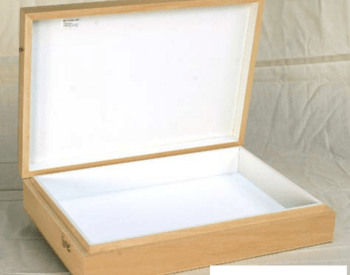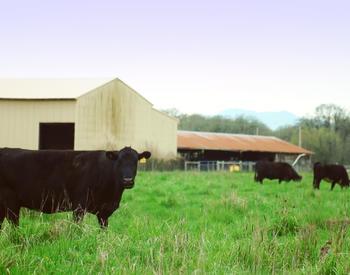The fungus Botrytis cinerea is a common pathogen that infects many different crops worldwide and causes gray mold on hemp.
This fungus initially infects weak, damaged or senescing leaf, bud or stem tissues, especially when environmental conditions are favorable. Temperatures between 50–80°F (68°F is optimal), high relative humidity and free water on plant surfaces favor B. cinerea infections. Rainy periods during bud maturation can result in significant disease outbreaks in outdoor hemp plantings. Also, greenhouse-grown hemp is at high risk for B. cinerea infection due to the high relative humidity that can occur in indoor grow sites.
On Botrytis-infected plant tissues, the pathogen produces a gray-brown mass of asexual spores known as conidia when the relative humidity is higher. Conidia are usually wind-blown and can result in further spread of the pathogen.
Conidia are produced throughout the growing season under a wide range of temperatures and relative humidity levels. Small black sclerotia structures can also develop on affected plant tissues although they may occur infrequently. These durable structures consist of dense fungal masses that can fall from affected tissues and survive in soil for months to years. Due to the widespread presence of B. cinerea conidia on a range of plants (herbs, cereals, berries, grapes, ornamentals, tree fruits, vegetables, nut crops, etc.) throughout the year, especially in western Oregon and Washington, the sclerotia are not necessary to cause gray mold outbreaks.
The economic impact of Botrytis on hemp is primarily through the infection of flowers and associated buds. Flower bud tissues and leaves will first exhibit a water-soaked appearance in areas where infection has occurred. Infected buds eventually turn brown as tissues die, and the fungus can sporulate on the affected bud tissues (figures 1A–C). The fungus can also infect stems, and pale to light-brown colored areas develop on affected stems as well as gray-colored sporulation (figure 1D).
Stem cankers can cause splitting or breakage of branches as well as kill the growing tip on affected branches. Infected hemp tissues can die rapidly, potentially within one week, depending on environmental conditions. Young hemp seedlings can also be killed by Botrytis when young plants are infected.
Management of Botrytis in hemp plantings
- Avoid mechanical injuries to plants, including those caused by caterpillars feeding on buds, since Botrytis can infect easily through wounded tissues.
- Minimize conductive conditions for disease by increasing spacing between plants and orienting rows to promote air movement within and around plants. In greenhouses and hoop houses, maintain warm temperatures, high light intensity and relative humidity below 50%.
- Avoid practices that keep plants wet for 12 hours or longer. Limit irrigation during and after bloom. Use bottom-watering methods rather than overhead irrigation. Do not over-water in the greenhouse, and prevent standing water or pooled water inside greenhouses.
- Avoid over-fertilization with nitrogen. An overabundance of nitrogen creates a more dense plant canopy that impedes air movement and promotes high humidity within the plant canopy.
- Apply a protective fungicide during bud development that is efficacious on gray mold; materials are registered and can be found on the Oregon Department of Agriculture hemp pesticide list. Materials that may aid the management of gray mold on hemp include LifeGard WG (OMRI listed for organic production), Regalia (OMRI listed), and Stargus (OMRI listed). A field trial conducted by Bates & Ocamb in 2020 showed that Stargus at 2 quarts/A on a weekly interval during bud development reduced gray mold incidence and severity on hemp compared to nontreated plants.
¡Use los pesticidas con seguridad!
- Póngase ropa de protección y equipo de seguridad según las recomendaciones de la etiqueta. Báñese después de cada uso.
- Lea la etiqueta del pesticida—aunque lo haya usado antes. Siga al pie de la letra las indicaciones de la etiqueta (y cualquiera otra indicación que Ud. tenga).
- Tenga precaución al aplicar los pesticidas. Conozca su responsabilidad legal como aplicador de pesticidas. Usted puede ser responsable de heridas o daños resultantes del uso de un pesticida.
